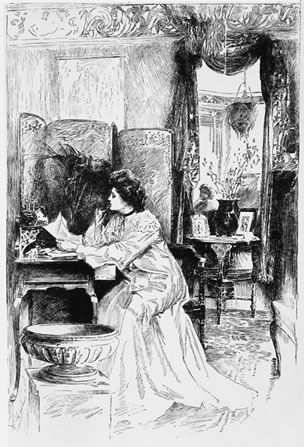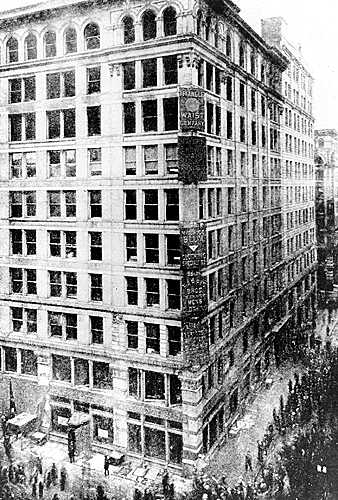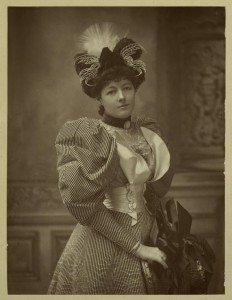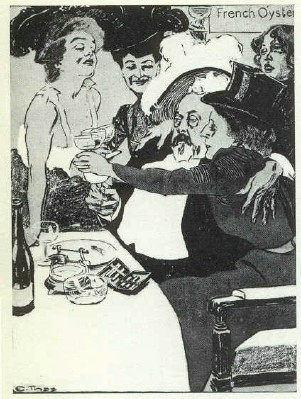
In early 1911, Edwardian high society was roused into a furor over a mysterious woman requesting the secrets of their manor houses via servants. This method of obtaining gossip was a tactic perfected by Colonel Mann for the supply of scandal for Town Topics, and the culprit behind “Harriet Churchill” no doubt assumed this could be replicated in England!
The following letter appeared in The Times over the signature “Householder”:—
My butler, who is leaving my service, recently advertised for a situation, and in reply received a letter of which I send you a copy. It is difficult to believe that any one with the slightest pretension of being a lady or possessed of any notion of self-respect should descend to methods mean and contemptible. Such methods throw an enormous temptation in the way of servants, besides exposing them to actions for slander should they fall into the trap laid by this scandal-monger. One likes to imagine that conversations that take place at one’s own dinner table are private: now it appears that one’s servants are to be bribed to repeat all the tittle-tattle they hear, when no doubt it will be worked up into
something “spicy” by this spurious journalist.
The letter is as follows:—
Dear Sir,—Noting your advertisement in the Morning Post I shall be pleased to hear from you if you have half an hour to spare once or twice at week and would care to turn it into cash by writing me a long, gossipy letter about the well-known people in English Society who stay in the houses where you are employed. I pay liberally and settle each month for the letters received the previous one. I write for some of the American papers, which insist on having current gossip, amusing stories, &c. about well-known people over here, and I buy large quantities of such letters regularly. If you think you would care to double or treble your salary in this way write me a good specimen letter for me to see what you can do and I will then write more fully as to terms. To give you an idea of what I buy, I may say that just now anything about Lady Gerard and the De Forests is “good copy” on account of the slander case between them now coming on; also about the Dillon jockey on account of the Marie Lloyd divorce suit, in which he is corespondent; also about Lord Howard de Walden’s suit for libel against Mr. Lewis. If you write I wish you if you have any friends with whom you could put me into communication among the staff at Lord Howard de Walden’s, Lady Gerard’s, Baron de Forest’s, Sir Thomas Lipton’s, Sir Ernest Cassel’s, Mrs. George Keppel’s or her brother Sir Archibald Edmonstone’s, or at Mrs. Leeds’, who has taken Mrs. George Keppel’s new house in Grosvenor-street.
Yours faithfully,
Harriet Churchill.
Chestnut Cottage, Ladywood-road,
Birmingham.
P.S.—Have you any friends among the staff of any of the leading London Clubs, as The Turf, White’s, Marlborough, or Bachelors, or leading restaurants such as Claridge’s, the Savoy. Gaiety, or Waldorf?
Our Birmingham Correspondent writes that “Harriet Churchill” is not the woman’s real name. She has, he adds, been at work in Birmingham as a journalist for some years, taking frequent holidays, during which she generally went hunting with her friends.
— The Living Age (1911)
‘WHO IS HARRIET?’ ALL LONDON ASKING
“Who’s Harriet?” has this week been a gag heard almost as frequently as was once the popular question, “Who’s your hatter?”. “Harriet” is the woman whose efforts to obtain news of society scandals by purchase from domestic servants were exposed by an indignant “Householder” in the London Times. The week has seen the growth of a huge crop of new letters relative to the activities of “Harriet,” facsimiles of some of whose correspondence have been published daily. There is a good deal of mystery about “Harriet,” for the surname with which she signs her letters, “Churchill,” is fictitious and the address she uses is a provincial boarding house, where she makes only rare visits. Scores of reporters have been on her track the whole week, but their inquiries have elicited no information further than that she is at present staying, under her real name, at a country house somewhere in the Midlands.
— New York Times, January 29, 1911
Meanwhile a poor woman, who by some London papers has been identified to their own satisfaction with the mysterious “Harriet,” has been removed from her father’s house in the Midlands to a lunatic asylum. Under the stress of overwork it is said, she suffered a mental breakdown. Her father, who is a farmer, has given an interview, in which he said:
“We have really known very little of the nature of the work my daughter has been doing. It was very seldom that she spoke of it to us. Three or four years ago she was in London, and it was while she was in London, I assume, that she became connected with the American papers. I have not a very high opinion those American papers,” judiciously observed the supposed “Harriet’s” father, “and I suspect it was first suggested to my daughter by them that she obtain the sort of information she was trying to get as ‘Harriet Churchill’.”
The woman’s name is Christine Steedman. A Birmingham dispatch to The Evening News, which has pursued an independent investigation as to the identity of “Harriet,” says Miss Steedman is the daughter of a Coventry farmer and has been engaged in journalistic work for some years. For some time she has had periods of irresponsibility and her friends declare that the letters written in the name of Harriet Churchill were due to her unhappy condition of mind.
— New York Times, February 10, 1911
So what do you think? Was Christine Steedman really “Harriet Churchill”? What about how Steedman’s alleged involvement in the scheme was blamed on her mental faculties?





totally fascinating that whenever a “woman” did something out of the ordinary, she would be packed off to the “loony bin”, much to the approval of society in general. It’s a wonder to me that women have gotten as far as we have.
It would to a lesser degree be interesting to discover whether said Ms Steedman was in fact the actual author of those letters. Have you been able to discover anything further regarding this????
BTW love reading these posts; keep up the good work!
hugs ~K
@Karin: That’s what struck me about this story: that the alleged culprit behind these letters was pushed into obscurity with the claim that she was mentally unstable. I haven’t found anything else about the story, likely because the aristocracy were so grateful it’d been taken care of, but it is a great historical “what if?” isn’t it?
I always smile when I see one of your posts in my inbox. I know I will be transported into the fascinating past. Thanks for the service you provide!